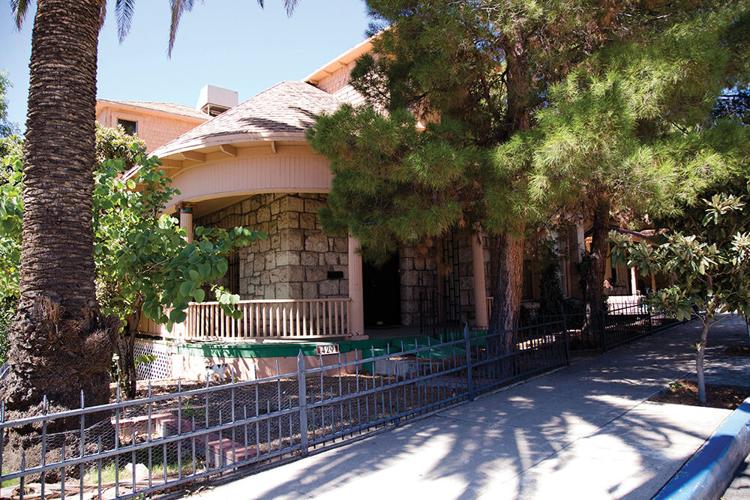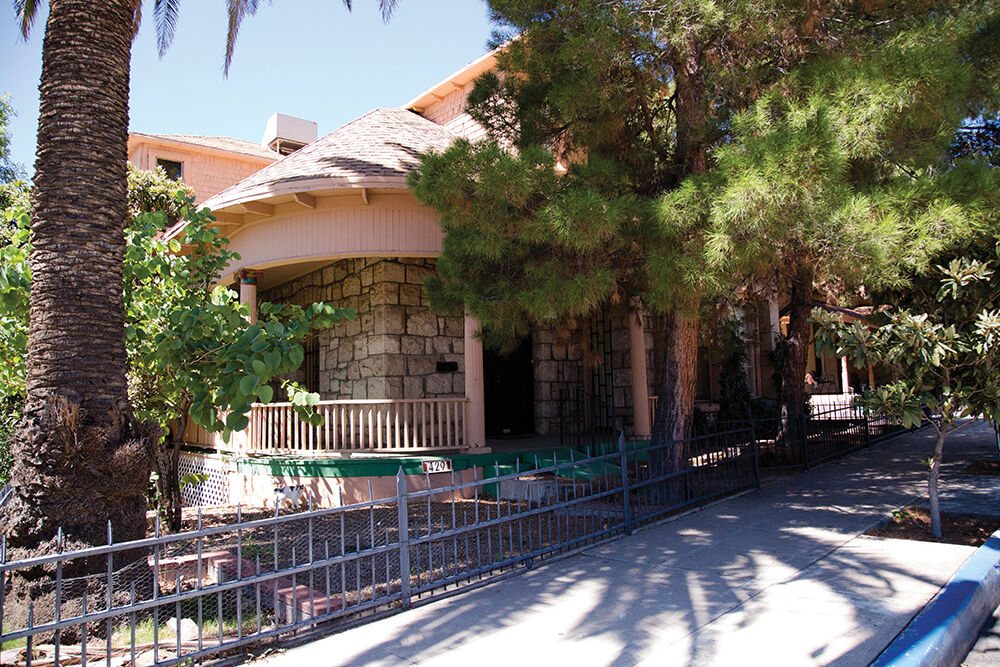The family of the late Arizona Gov. Raúl H. Castro is suing the University of Arizona over an alleged breach of contract for trying to sell his home in Nogales, which the family donated to the university for a specific use.
The complaint, which Castro’s daughter Beth Castro filed in Santa Cruz County Superior Court on March 30, challenges the university’s decision to sell the house rather than use it as a headquarters for border studies initiatives as planned.
“The Castro Home holds more than monetary value to the Castro Family. Specifically, the Castro Family enjoyed the Home for two decades and, upon Raúl’s death, wanted the Castro Home to be dedicated to supporting Arizonans and the Santa Cruz County community,” the lawsuit says. If the UA sold the home, “the Castro Family will suffer irreparable injury which are not remediable by compensatory damages.”
The 3,774-square-foot, two-story house at 429 W. Crawford St., listed on Zillow for $300,000, was built in the early 1900s.

Governor Raul Castro. Photo taken in 1974. Copyright 1996 The Arizona Daily Star
Raúl Castro served from 1975-77 as Arizona’s first and only Mexican-American governor before becoming ambassador to Argentina from 1977-80. Many years later, in 2003, Raúl Castro and his wife, Patricia Castro, purchased and moved into the home in Nogales, which sits on the U.S.-Mexico border.
According to the lawsuit, locals started colloquially referring to the property as the Castro House, and it has “significant emotional and personal value to the Castro Family.”
According to a public real estate report, the home went up for sale for $259,000 in 2014. Although the asking price dropped to $215,000, the house was taken off the market after not selling for six months.
2016 agreement
The UA didn’t get involved until the following year when Raúl Castro died in 2015 (Patricia Castro died in 2018). After his death, the lawsuit says, the UA approached the Castro family about headquartering its emerging border studies initiatives at the house.
In 2016, both parties signed an agreement that said the Castro family would donate the house to the UA Foundation if the UA “agreed to develop, launch, and maintain the Border Studies Program, under Raul and Patricia’s name and agreed to house the Border Studies Program in the Castro house,” according to the lawsuit.
The UA planned to have the Raúl H. and Patricia M. Castro Border Studies and Outreach Center serve as a hub for the UA’s various border studies initiatives.
“The Castro Family entered the Agreement, in large part,” the lawsuit said, “because they (wanted) to dedicate the Castro Home to an important cause, such as the Border Studies Program, which would uplift the border community in Santa Cruz County.”
Soon after, the university started developing its border studies initiatives, fundraising and identifying community partners. Pursuant to the agreement, it also used the Castro Family’s name and image in some of its promotional materials.
Although the lawsuit repeatedly refers to a “Border Studies Program,” UA spokeswoman Pam Scott clarified in an email to the Arizona Daily Star that “there has never been a Border Studies Program,” but “instead, (the UA) has various programs that do work related to the border.”
Those include the Confluencenter for Creative Inquiry’s Fronteridades program, Santa Cruz County Cooperative Extension, the nonprofit affiliate Southwest Folklife Alliance, in addition to many academic units, which research and teach on the intersection of the border with topics such as journalism, health and sustainability. According to Scott, “These units have never operated out of the Castro House and will continue to operate as they always have.”
UA: Cost thwarted plan
Despite the university’s original plans to use the Castro House as a physical clearinghouse for those efforts, the UA put the property up for sale in February 2023.
Citing an inability to raise enough money to restore and convert the historic residential home into a publicly accessible university-run border center, the UA announced the sale in a Feb. 16 news release.
Scott also elaborated to the Star that when the UA first took ownership of the property in 2016, it estimated the project to cost $600,000.
But when the COVID pandemic disrupted supply chains, that estimate rose to $1.2 million on the low end and up to $2.6 million if both floors of the house were converted.
As for the money it already raised — approximately $275,000 — the UA said in its news release that it “will either be returned to the donors or added to the scholarship fund, according to the wishes of each funder.”
The unexpected attempt to sell the house prompted Beth Castro, on behalf of herself and her late parents’ estate, to file suit against both the UA and the Arizona Board of Regents for breaking the 2016 agreement and for “unjust enrichment” if and when the UA collects money from selling the property.
The suit asks for an injunction prohibiting the UA from selling the home and, ultimately, rescission of the 2016 agreement. That means if the courts side with Beth Castro, the house would come back into the ownership of the Castro family.
The Board of Regents and the UA were served with the complaint within days of Castro filing it, and have approximately one month to respond with either an answer to the allegations or a motion to dismiss.
“Essentially, the ball is in their court to respond within a timely manner,” Briana Ortega, the attorney representing Beth Castro, told the Arizona Daily Star. “From there, we move forward with litigation.”
Both defendants declined to comment to the Star about the active litigation.
Future of border studies at UA
“The overall message from the Castro family in filing this lawsuit is that they’re not filing it for their own purposes, they’re filing it for the community,” Ortega said. “They want the Castro home back so they can figure out a good use for it.”
Javier Duran, director of the Confluencenter for Creative Inquiry and a professor of Latin American and border studies, said he can’t comment on the lawsuit specifically but that the loss of the Castro house shouldn’t diminish the border studies scholarship the UA is producing.
In the past few years, Duran and his colleagues at the UA have received more than $2 million in grants to pursue academic study about the border.
“I can understand why some people in the community might be disappointed (about) not having the Castro house as an active site because there’s a high interest in the community for the university to have a presence in the community,” Duran said. “We should still be able to accomplish that. It just takes time.”
While the UA’s border studies initiatives are growing, the interdisciplinary nature of the field means scholarship is naturally scattered across campus, he said. And just because the Castro house won’t be serving as a clearinghouse for the work, Duran said there’s still a vision for what a central space could look like.
“It could have a physical presence, but we’re also very mindful of the advances we have achieved in terms of remote, distance and virtual education,” he said. “We see it as a hybrid entity.”
The Confluencenter for Creative Inquiry at the University of Arizona is working to highlight life in Arizona-Sonora border communities through its "Fronteridades" program. Video courtesy of UA's Confluencenter for Creative Inquiry.






